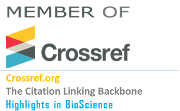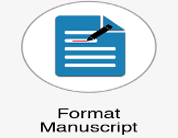Sugar Beet Improvement using Agrobacterium-mediated Transformation technology
Abstract
Since discovering Agrobacterium tumefaciens distinctive capacity to incorporate a specified part of their transfer-DNA (T-DNA) into eukaryotic cells, the bacteria were commonly used for crop transformation originally of dicotyledonous crops and subsequently of nearly all organisms. To achieve this, the tumor-inducing (Ti) plasmid was changed to extract phytohormone and opine biosynthetic proteins (cytokinin and auxin) so as not to interfere with ordinary morphological growth. Overall, the conversion mediated by Agrobacterium was easier, more effective and less costly relative to other technologies. It also results in insertions with small copy count. Tumor development in crops has also proved the susceptibility of explants from field-grown sugar beet crops to Agrobacterium tumefaciens. Early efforts by Agrobacterium tumefaciens to transform sugar beet were unsuccessful, primarily owing to an inability to regenerate crops from stably modified callus or suspended cells. A genotype-independent method as defined under which cotyledonary explants of various sugar beet genotypes are inoculated with Agrobacterium tumefaciens comprising whether kanamycin tolerance and GUS activity or kanamycin resistance, GUS activity and glyphosate tolerance. GUS expression, NPT dot blot as well as EPSPS assays verified the presence of transgenes; progeny showed Mendelian genetically modified inheritance and glyphosate tolerance at deadly concentrations to control plants. Unfortunately, there was no publication of technical information about the technique. Here we reviewed the concept Agrobacterium-mediated transformation and how to be applicable
Keywords
Full Text:
View Full TextReferences
Lindsey K, Gallois P. Transformation of sugarbeet (Beta vulgaris) by Agrobacterium tumefaciens. J Exp Bot. Oxford University Press; 1990;41(5):529–36.
Halluin K, Bossut M, Bonne E, Mazur B, Leemans J, Botterman J. Transformation of Sugarbeet (Beta vulgaris L.) and Evaluation of Herbicide Resistance in Transgenic Plants. Bio/Technology [Internet]. 1992;10(3):309–14
Jacq B, Lesobre O, Sangwan RS, Sangwan-Norreel BS. Factors influencing T-DNA transfer in Agrobacterium-mediated transformation of sugarbeet. Plant Cell Rep. Springer; 1993;12(11):621–4.
Krens FA, Verhoeven HA, Van Tunen AJ, Hall RD. The use of an automated cell tracking system to identify specific cell types competent for regeneration and transformation. Vitr Cell Dev Biol. Springer; 1998;34(2):81–6.
Zakharchenko NS, Kalyaeva MA, Bur’yanov YI, others. The method for genetic transformation of different sugar beet varieties. Russ J Plant Physiol. 2000;47(1):70–5.
Krens, Trifonova A, Keizer LCP, Hall RD. The effect of exogenously-applied phytohormones on gene transfer efficiency in sugarbeet (Beta vulgaris L.). Plant Sci. Elsevier; 1996;116(1):97–106.
Pedersen HC, Steen P. The stability of transgenes inserted into sugarbeet (Beta vulgaris L.). 58th Congress International Institute for Beet Research, Paris (France), 19-22 Jun 1995. 1995.
Tenning P, Bensefelt J, Fouillard P, Mannerloef M, Tuvesson S. Glyphosate tolerance in transgenic sugar beet. 58th Congress International Institute for Beet Research, Paris (France), 19-22 Jun 1995. 1995.
Mannerlof M, Tuvesson S, Steen P, Tenning P. Transgenic sugar beet tolerant to glyphosate. Euphytica. Springer; 1997;94(1):83–91.
Snyder GW, Ingersoll JC, Smigocki AC, Owens LD. Introduction of pathogen defense genes and a cytokinin biosynthesis gene into sugarbeet (Beta vulgaris L.) by Agrobacterium or particle bombardment. Plant Cell Rep. Springer; 1999;18(10):829–34.
Adawy SS, Mokhtar MM, Alsamman AM, Sakr MM. Development of annotated EST-SSR database in olive (Olea europaea). Int J Sci Res. 2015;4(9):1063–73.
Mokhtar MM, Adawy SS, El-Assal SE-DS, Hussein EHA. Genic and Intergenic SSR Database Generation, SNPs Determination and Pathway Annotations, in Date Palm (Phoenix dactylifera L.). PLoS One. Public Library of Science; 2016;11(7):e0159268.
Wozniak CA, Owens LD. Transformation of sugarbeet cell suspension cultures mediated by Agrobacterium tumefaciens. J Cell Biochem Suppl D. 1989;13:272.
Vitha S, Phillips JP, Gartland JS, Gartland KMA, Beneš K, Elliott MC. Activity of β-glucuronidase in root tips of different types of transgenic sugar beet plants. Biol Plant. Springer; 1998;40(4):531–41.
Ivic SD, Smigocki AC. Transformation of sugar beet cell suspension cultures. Vitr Cell Dev Biol. Springer; 2003;39(6):573–7.
Fry JE, Barnason AR, Hinchee M. Genotype-independent transformation of sugarbeet using Agrobacterium tumefaciens. Molecular Biology of Plant Growth and Development, Third International Congress of Plant Molecular Biology, 6--12 October 1991, Tucson, AZ, USA. 1991. p. 384.
Zhang C-L, Chen D-F, Elliott MC, Slater A. Thidiazuron-induced organogenesis and somatic embryogenesis in sugar beet (Beta vulgaris L.). Vitr Cell Dev Biol. Springer; 2001;37(2):305–10.
Norouzi P, Malboobi MA, Zamani K, Yazdi-Samadi H. Using a competent tissue for efficient transformation of sugarbeet (Beta vulgaris L.). Vitr Cell Dev Biol. Springer; 2005;41(1):11–6.
Hisano H, Kimoto Y, Hayakawa H, Takeichi J, Domae T, Hashimoto R, et al. High frequency Agrobacterium-mediated transformation and plant regeneration via direct shoot formation from leaf explants in Beta vulgaris and Beta maritima. Plant Cell Rep. Springer; 2004;22(12):910–8.
Kishchenko EM, Komarnitskii IK, Kuchuk N V. Production of transgenetic sugarbeet (Beta vulgaris L.) plants resistant to phosphinothricin. Cell Biol Int. Wiley Online Library; 2005;29(1):15–9.
Bekheet SA. A synthetic seed method through encapsulation of in vitro proliferated bulblets of garlic (Allium sativum L.). Arab J Biotech. 2006;9:415–26.
Joersbo M, Mikkelsen JD, Brunstedt J. Relationship between promoter strength and transformation frequencies using mannose selection for the production of transgenic sugar beet. Mol Breed. Springer; 2000;6(2):207–13.
Joersbo M, Guldager Petersen S, Okkels FT. Parameters interacting with mannose selection employed for the production of transgenic sugar beet. Physiol Plant. Wiley Online Library; 1999;105(1):109–15.
Luo Y, Guo Z, Li L. Evolutionary conservation of microRNA regulatory programs in plant flower development. Dev Biol. 2013;380(2):133–44.
May MJ, Wilson RG. Weeds and weed control. Sugar beet. Wiley Online Library; 2006;359–86.
James C. Global status of commercialized biotech/GM crops, 2011. ISAAA Ithaca, NY; 2011.
Lathouwers J, Weyens G, Lefebvre M. Transgenic research in sugar beet. Adv sugar beet Res Genet Modif sugar beet Int Inst Beet Res Brussels. 2005;5–24.
Yang X, Scheffler BE, Weston LA. Recent developments in primer design for DNA polymorphism and mRNA profiling in higher plants. 2006;10:1–10.
Tomlin CDS. The pesticide manual, British Crop Protection Council, Alton. Hampshire, United Kingdom. 2003;
Hinchee MAW, Padgette SR, Kishore GM, Delannay X, Fraley RT. Herbicide-tolerant crops. In “Transgenic Plants Vol. 1” Kung SD and R. Wu. Academic Press, Inc., San Diego; 1993.
Brants I, Harms H. Herbicide tolerant sugar beet. Comptes-Rendus des Congres de l’Institut International de Recherches Betteravieres (Belgium). 1998.
Meier P, Wackernagel W. Monitoring the spread of recombinant DNA from field plots with transgenic sugar beet plants by PCR and natural transformation of Pseudomonas stutzeri. Transgenic Res. Springer; 2003;12(3):293–304.
Joersbo M. Chimeric genes for selection systems and reporter makers. Bentham Science Publishers: Oak Park; 2011.
Ming R, VanBuren R, Wai CM, Tang H, Schatz MC, Bowers JE, et al. The pineapple genome and the evolution of CAM photosynthesis. Nat Genet. 2015;47(12).
DOI: https://doi.org/10.36462/H.BioSci.20183
Refbacks
- There are currently no refbacks.
Copyright (c) 2018 Youssef and Rslan

This work is licensed under a Creative Commons Attribution 4.0 International License.
...........................................................................................................................................................
Other "Highlights in" Journals
Highlights in Bioinformatics, Highlights in Chemistry, Highlights in Science, Highlights in Microbiology, Highlights in Plant Science
........................................................................................................................................
International Library of Science "HighlightsIn" is an Open Access Scientific Publishers, aiming to science and knowledge support












